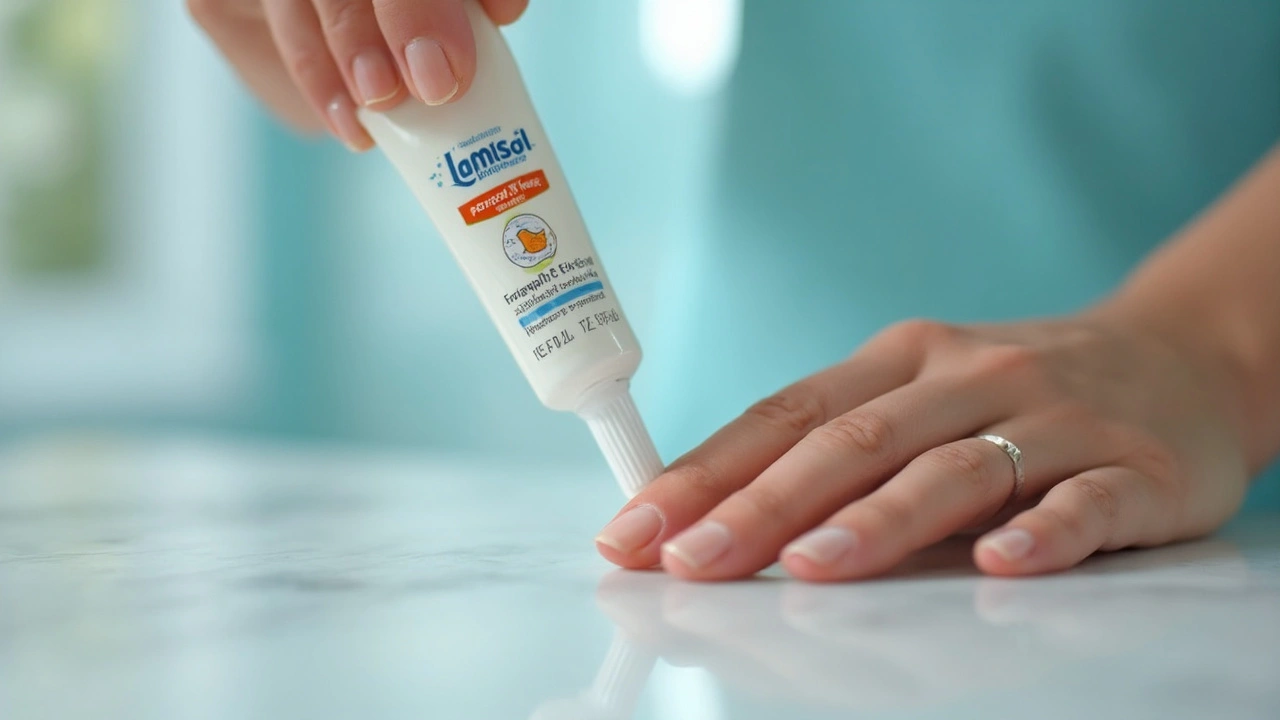Terbinafine: What It Does and How You Can Use It
If you’ve ever dealt with stubborn fungal infections like athlete’s foot or nail fungus, terbinafine might be on your radar. It’s an antifungal medication that's pretty effective at tackling those fungal annoyances that just won’t go away. Terbinafine comes in oral tablets and topical creams, which gives you options depending on the infection type and severity.
The oral form is often prescribed for tougher infections, especially those affecting nails, because it gets to the root by traveling through your bloodstream. Topical creams or gels work well for skin-based infections and are easier to apply directly where it hurts. But no matter the form, terbinafine targets the fungi responsible by blocking their ability to make key cell components, which stops them from growing and spreading.
Common Uses and What to Expect
Terbinafine is mainly used for infections like athlete’s foot, ringworm, and especially fungal nail infections. If you have thick, discolored nails or itchy, scaly skin, terbinafine could be a game-changer. Treatment length varies—skin infections might clear up within a few weeks, while nail infections often need several months of treatment to fully resolve.
Keep in mind, oral terbinafine might come with side effects such as stomach upset or headaches, and in rare cases, more serious issues like liver problems. Always let your doctor know about your health history and any other medications you take. Topical terbinafine usually causes fewer side effects but can still irritate the skin in some cases, so watch for any unusual reactions.
Practical Tips for Using Terbinafine
Consistency really matters here. If your doctor prescribes tablets, take them exactly as directed—don’t stop early, even if things start looking better. Fungal infections are stubborn and often come back if treatment isn't fully completed. For creams, apply to clean, dry skin, and try to avoid covering the area tightly unless advised by your doctor.
Also, keep your feet dry and change socks regularly if you're dealing with foot infections—that helps the medication work better by limiting fungal growth. Avoid sharing towels, shoes, or nail clippers to prevent spreading the infection. And finally, if your symptoms aren’t improving after the full course or if they worsen, reach out to your healthcare provider for advice.
Terbinafine is a solid choice against fungal infections, but like any medication, it works best when you use it right and keep an eye on how you feel. Got stubborn fungus? Terbinafine might just be what you need to kick it for good.
Lamisil: Everything You Need to Know About Treating Fungal Infections Safely
By Lindsey Smith On 8 Jun, 2025 Comments (11)

Ever wondered if there's an easy fix for stubborn fungus on your skin or nails? Lamisil, a popular antifungal medication, could be the answer. This article breaks down how Lamisil works, what it's good for, and tips for using it safely. Find out what you should watch out for and how to get the best results with this well-known treatment. Real tips, real info, zero fluff.
View More




